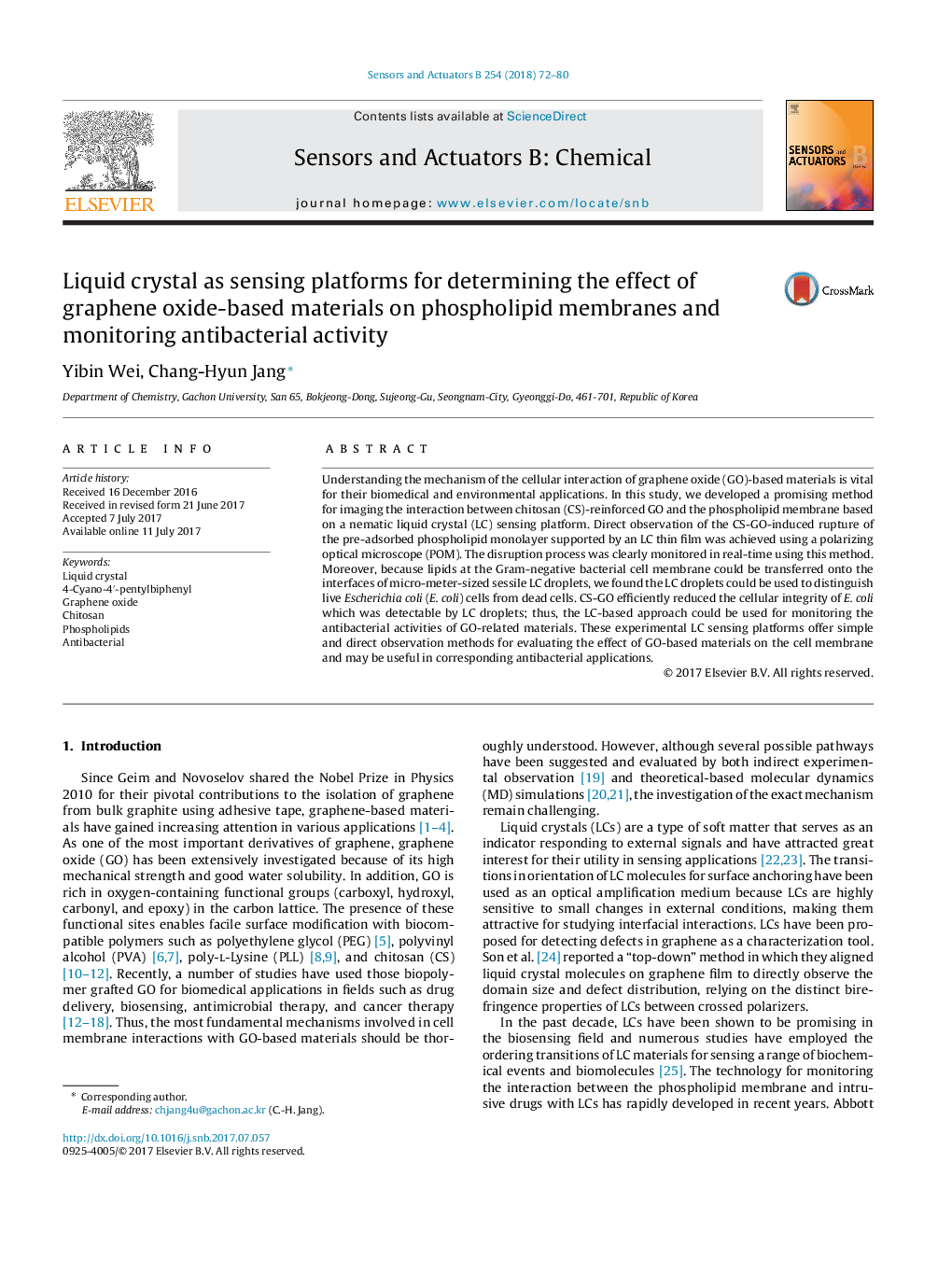| Article ID | Journal | Published Year | Pages | File Type |
|---|---|---|---|---|
| 5008653 | Sensors and Actuators B: Chemical | 2018 | 9 Pages |
â¢Two liquid crystal based platforms were used to determine cellular interaction of graphene oxide related nanomaterials.â¢Direction observation of the interaction between graphene oxide related nanomaterials induced rupture of phospholipid membranes with liquid crystal.â¢Sessile liquid crystal droplets were found to be promising antibacterial sensors.â¢Synergistic soft matter and nanomaterial have great potential in biosensing applications.
Understanding the mechanism of the cellular interaction of graphene oxide (GO)-based materials is vital for their biomedical and environmental applications. In this study, we developed a promising method for imaging the interaction between chitosan (CS)-reinforced GO and the phospholipid membrane based on a nematic liquid crystal (LC) sensing platform. Direct observation of the CS-GO-induced rupture of the pre-adsorbed phospholipid monolayer supported by an LC thin film was achieved using a polarizing optical microscope (POM). The disruption process was clearly monitored in real-time using this method. Moreover, because lipids at the Gram-negative bacterial cell membrane could be transferred onto the interfaces of micro-meter-sized sessile LC droplets, we found the LC droplets could be used to distinguish live Escherichia coli (E. coli) cells from dead cells. CS-GO efficiently reduced the cellular integrity of E. coli which was detectable by LC droplets; thus, the LC-based approach could be used for monitoring the antibacterial activities of GO-related materials. These experimental LC sensing platforms offer simple and direct observation methods for evaluating the effect of GO-based materials on the cell membrane and may be useful in corresponding antibacterial applications.
